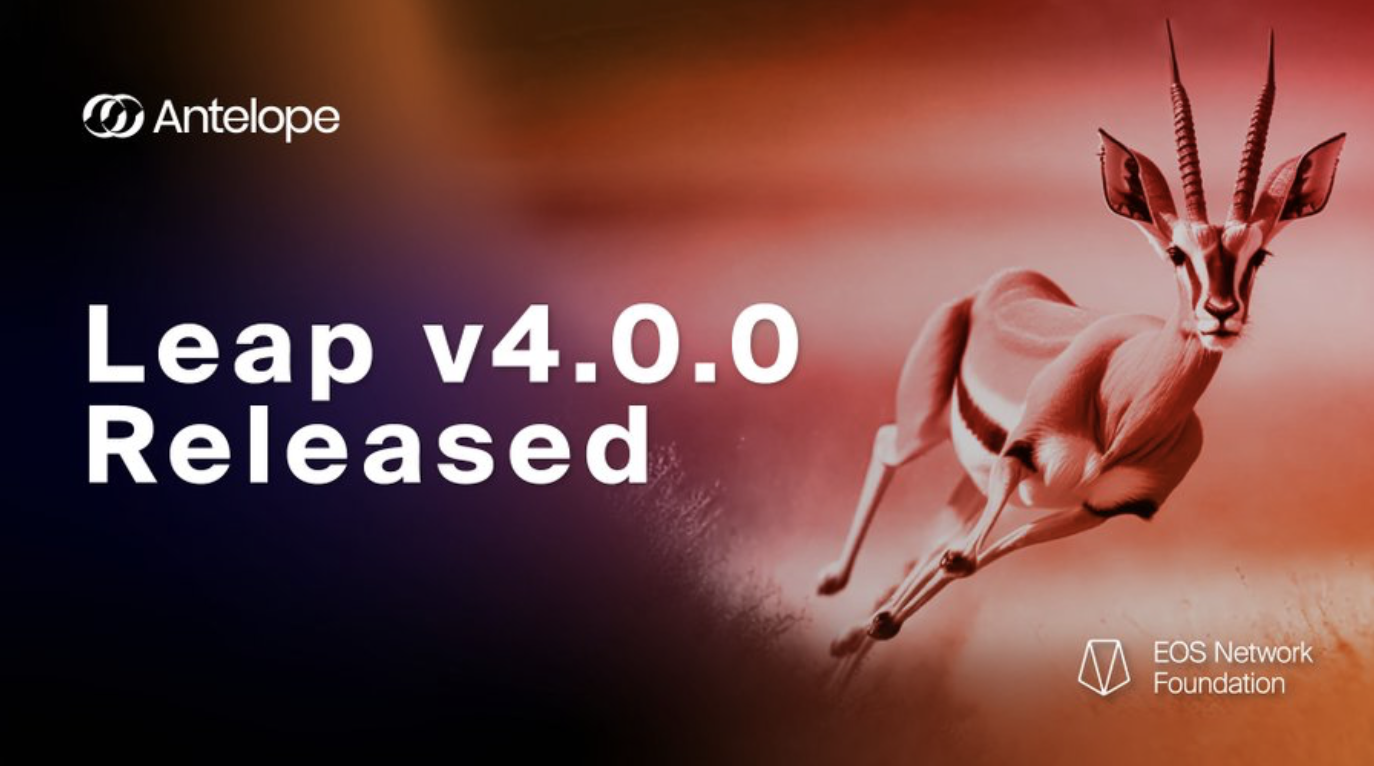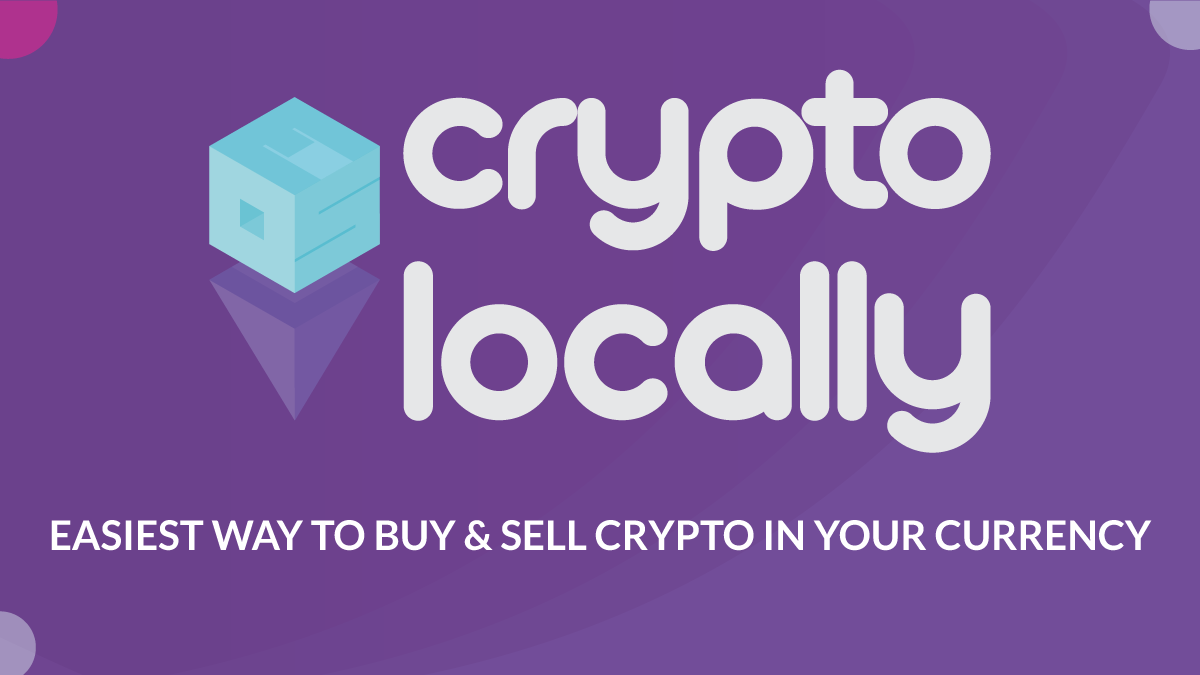This Week: Laying Foundations for the Increased Adoption of EOS
With the sentiment around cryptocurrencies having turned bearish these past few weeks, development of blockchain technologies continues to advance. There’s currently a pressing industry need for more performant and scalable blockchain infrastructure, an area in which EOS excels.
EOS’ approach focuses on laying strong foundations to enable superior technical capabilities that will help to onboard developers, along with funding. Developers are at the core of a blockchain ecosystem’s success as they build the applications that users want to interact with, and investors look to invest in.
This past week’s developments highlight the strong foundations that convey an incoming wave of increased EOS adoption through collaboration with other blockchain ecosystems.
Antelope Leap v4.0.0 release

The Antelope codebase, which powers the EOS, WAX, Telos, and UX Network blockchains etc, has been upgraded to version 4.0.0. This comes after the testing and updating of three previous release candidates to ensure everything was a hundred percent operational before an official release.
The Leap v4.0.0 release brings with it performance improvements of greater speed, scalability, and reliability. A more detailed look into the Leap v4.0.0 upgrade shows improvements in:
Higher Performance with Multi-Threading Features
● *Two new features to take advantage of multi-core architecture SHiP (state history plugin) multi-threading*. By allowing multi-threaded processing of state history plugin client requests, the main application thread is freed up to perform other computations that must be performed serially.
● *Parallelized speculative read-only transaction execution*. Parallelizing read-only transaction execution improves the performance, allows processing of this class of transactions in multiple threads, and introduces a new read-only transaction RPC endpoint.
Together, these features empower improved overall node performance.
Reduced Latency and Faster Block Propagation
● A new feature for ‘*schedule based auto-peering*’. By giving Block Producers the ability to automatically manage connections based on the Block Producer schedule, nodes that are in schedule proximity are more likely to be peers. This ensures the shortest relay path for a block to the next Block Producer that depends on it.
● Another new feature for ‘*lighter validation for block relays*’. With lighter validation for block relays, nodes are enabled to relay blocks before fully validating or computing state, as long as certain conditions are met. This can reduce the time it takes for new blocks to be propagated across the network, leading to faster confirmation times and improved system performance.
More Control and Visibility Around State and History Data
● *A snapshot Scheduling API*. Which allows users to schedule and manage snapshot requests in advance, increasing reliability and reducing the potential for errors in the snapshot creation process. At the same time, it allows for greater flexibility in creating and managing snapshots.
● *A prometheus exporter for monitoring*. The Prometheus Exporter Plugin provides instrumentation of nodeos to expose data with Prometheus. The initial phase of instrumentation will allow for the evaluation of the usability of the instrumentation when viewed from Prometheus.
● *Dynamic log splitting*. Which gives node operators greater control over how logs are managed. The key benefit is that node operators are able to specify how many split log files to retain, and nodeos will automate aging out older logs by deleting them or moving them to another directory.
EOS node operators are advised to upgrade to this latest version of the Leap codebase in a timely manner to ensure compatibility with other pieces of network infrastructure. Full details of this Leap upgrade can be found in the Antelope Leap GitHub repository.
Read the full announcement of the upgrade - Antelope Leap v4.0.0 Released: Delivering Speed, Scalability, and Reliability
EOS Network Foundation at Consensus 2023

Representatives from the EOS Network Foundation (ENF) were in attendance at this year's Consensus event. Considered the world’s largest, longest running, and most influential gathering of the crypto, blockchain, and Web3 community, this was a great opportunity for the ENF to spread the word about the EOS ecosystem and its recent developments.
To kick things off, the ENF, along with several of its partners, hosted a Consensus kick-off party which included a panel on the ‘Future of Gaming’. The panel included representatives from the ENF, Telos, Upland, Alien Worlds, and Helika Analytics. A recording of the panel discussion is expected to be published in the coming days.
As for the Consensus 2023 event as a whole;
“We had a fantastic experience at #Consensus2023 connecting with community members, ecosystem partners, industry professionals and spreading the word about the new EOS.” - EOS Network Foundation
The ENF on Twitter has said it will share more photos and a full recap of the event. Which will probably provide some insights into the overall results or progress made in promoting the EOS ecosystem.
EOS EVM open sourced

On Thursday, this past week, the EOS Network Foundation (ENF) announced that the EOS EVM source code has been officially open sourced. Which is something that came as no surprise to many EOS stakeholders as the ENF has a mandate of building open source software to create a more transparent and collaborative environment within the EOS and Antelope ecosystems.
Open sourcing software is a valuable contribution in our industry because it shares the same values and beliefs of decentralization. By open sourcing the EOS EVM source code it means that anyone can contribute, modify and redistribute their version of the EOS EVM as they see fit. This approach is best for pushing technology innovation and to fast track the adoption of the technology.
“The most notable impact of open sourcing the EOS EVM is enabling all Antelope blockchains to also launch their own EVM as well. With the recent release of IBC, this is important to ensuring (sic) cross chain compatibility and feature parity.” - EOS Network Foundation
For EOS EVM app developers, open sourcing also means they can run their own RPC nodes, rather than relying solely on the ENF operated nodes. It also ensures perpetuity (longevity) as open source software lasts as long as its community remains, unlike proprietary software where if the company closes then the software can no longer be updated or stops working completely.
In addition to transparency and interoperability, the open sourcing builds further trust & credibility for the EOS EVM as it allows any user to verify the source code of the EVM smart contract. Having a diverse pool of developers working independently on the EOS EVM will ultimately improve its security, affordability, and flexibility.
As of writing EOS is trading at $1.02 (down from last week’s price of $1.07). EOS is currently doing $78 million in daily trading volume, and its market cap sits at $1.1 Billion. This week sees EOS still remains in the 44th position by market cap rankings. All stats are based on CoinMarketCap data.
Sources
● Antelope Leap v4.0.0 release
● EOS Network Foundation at Consensus 2023
● ENF Consensus 2023 Kickoff event
● [EOS EVM open sourced](
Suggested News
EOSLocally becomes CryptoLocally and announces to support cryptos from other chains!
EOSLocally, originally the first P2P EOS trading platform, recently announced a rebranding to reflect the company’s ev...
Pomelo Grants gears Up for a Bigger Season 2!
Applications for season 2 of Pomelo grants, a crowdfunding platform that multiplies your contributions, will open to th...

